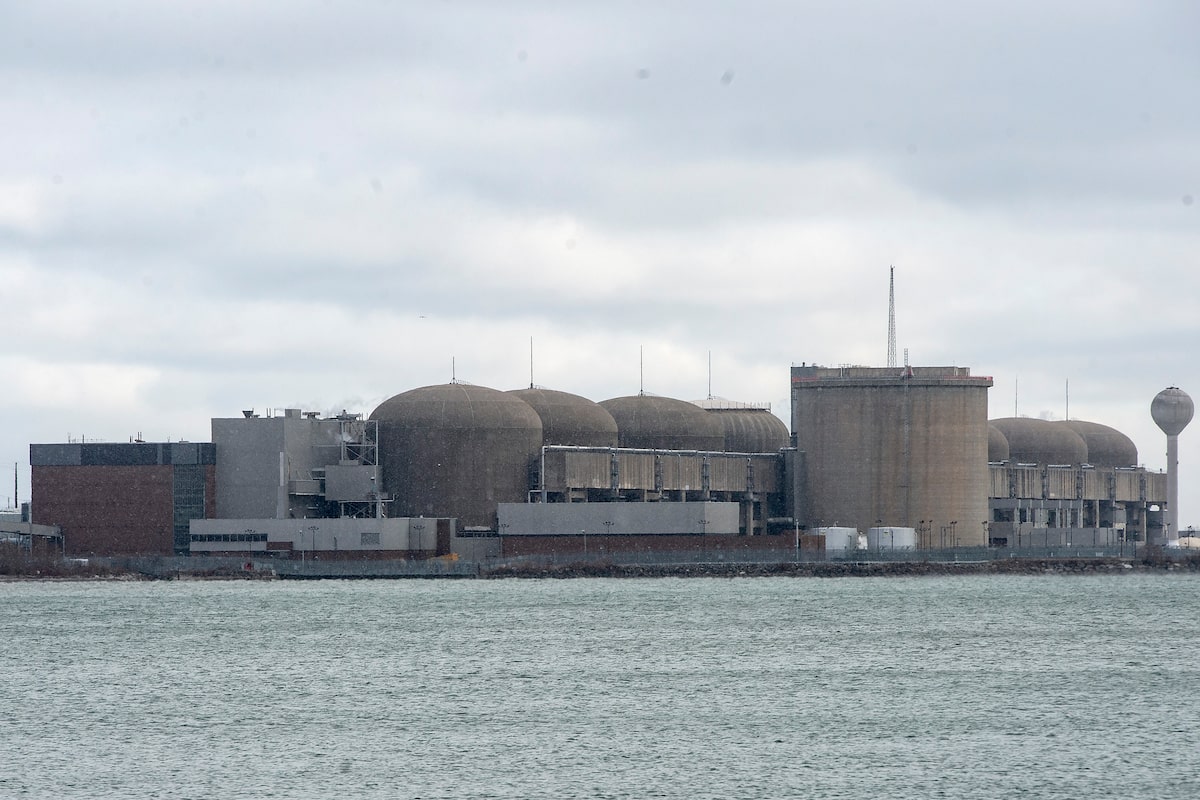Ontario’s Pickering Nuclear Generating Station in 2020. The idea of refurbishing four reactors at Pickering B was considered in 2006, but rejected a few years later.Frank Gunn/The Canadian Press
The Ontario government has granted final approval for the refurbishment of four nuclear power reactors at Ontario Power Generation’s Pickering Nuclear Generating Station.
The approved budget for the project is $26.8-billion, more than double the cost of refurbishing the Darlington Nuclear Generating Station, which generates significantly more power. OPG says the Darlington project is on track to wrap up next year, meeting its original schedule and $12.8-billion budget.
The Pickering refurbishment is substantially more expensive in part because of the plant’s age. OPG plans to replace steam turbines, steam generators and the station’s water intake – expensive work that was deemed unnecessary at the newer Darlington station. There’s also been considerable cost inflation between the two projects.
Refurbishments are complex, expensive undertakings, presenting numerous technical and logistical challenges. When they don’t go as planned – as happened with New Brunswick Power’s Point Lepreau Nuclear Generating Station and at Pickering in the 2000s – it can cost taxpayers dearly.
Opinion: Canada needs to step up. We need Candu nuclear technology
Candu reactors can operate for about three decades between major overhauls. Their fuel and heavy water moderator must be removed, and much of the reactor must be disassembled. Crucial components, such as the pressure tubes, must be replaced. All the resulting radioactive waste must be stored. Meanwhile, utilities may elect to overhaul or replace other major components in the station, such as steam generators and turbines.
The idea of refurbishing the four reactors at Pickering B was previously considered beginning in 2006, but rejected a few years later. OPG’s board of directors warned that the units were at significant risk of performing poorly once returned to service, with high operating costs. The estimated refurbishment cost back then was $10.7-billion.
Work is scheduled to begin in early 2027, with all units returned to service by the mid-2030s.
Pickering B’s refurbished reactors, located around 35 kilometres from downtown Toronto, are expected to have a combined capacity of 2,200 megawatts, a boost of 100 megawatts. (Darlington’s capacity is about 3,500 megawatts.) Arne Wohlschlegel, managing director at Siemens Energy Canada, said part of the increase will come from design improvements to the steam turbines and turbine control systems. (Siemens Energy has been awarded the work to replace the turbines.)
Energy Minister Stephen Lecce said Wednesday at a news conference the station’s life will be extended by 38 years and that the project will create 30,000 jobs during construction and another 3,700 permanent positions.
Made in Canada: Inside an urban Toronto facility making uranium fuel for CANDU reactors
Finance Minister Peter Bethlenfalvy cast the announcement as the latest example of his government’s firm commitment to the nuclear industry.
“I can guarantee you that we’ll have the nuclear industry’s back all the way through for the next 50 years,” he said.
Critics decried the decision. Mike Marcolongo, an associate director with Environmental Defence, described it as “a costly and high-risk choice that will push electricity bills higher.”
Pickering is Canada’s oldest commercial nuclear power station, featuring eight Candu reactors. Only the four newer B units, built in the 1970s and 80s, will be refurbished. They produce about one-tenth of Ontario’s power, and are expected to shut down in the third quarter of next year. There are no plans to overhaul the A units, which are permanently shut down.
Ontario has now marked nearly its entire commercial reactor fleet for refurbishment, and several units have already returned to service. Bruce Power is in the midst of refurbishing the eight-reactor Bruce Nuclear Generating Station in Tiverton, Ont. The overhaul of the final Darlington unit is nearly complete.
The Pickering project requires approval from the Canadian Nuclear Safety Commission, which has a long record of greenlighting such applications from nuclear utilities. Pickering B was originally expected to close roughly a decade ago, but the CNSC has consistently granted permissions to extend its life.
Editor’s note: A previous version of this article incorrectly stated that the Pickering B reactors are expected to shut down later this year. They are expected to shut down in the third quarter of 2026.

